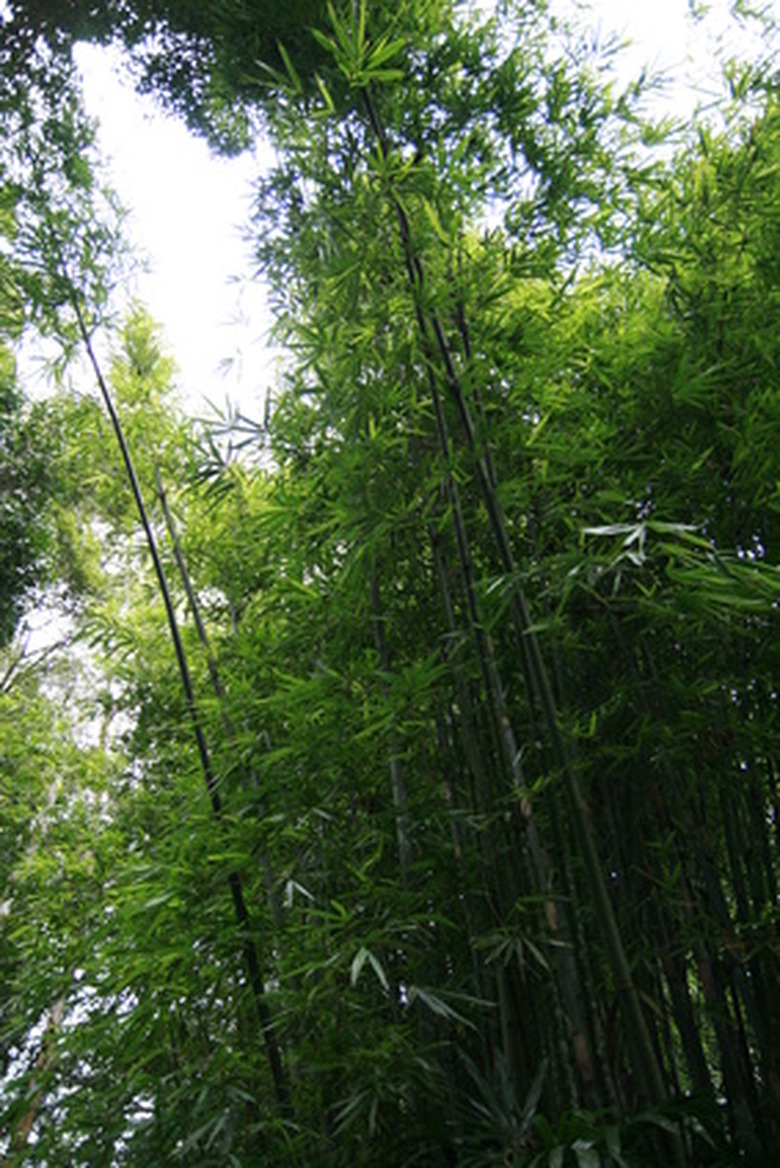How To Plant Bamboo In Texas
Things Needed
- Bamboo plant
- Compost
- Topsoil
- Water
- Rope or string
- Ground stakes
Bamboo is an amazingly fast growing grass that has more than 300 cultivars. Some grow more than 40 feet tall and others will grow more than 1 foot per day. This fast growth is making bamboo a very popular plant to use for wind screens and privacy hedges.
Since parts of Texas have poor soil and strong winds, it also helps to enrich the soil before planting your bamboo, and staking it for the first few weeks so it won't blow over in the wind.
Step 1
The day before planting, water your bamboo plant completely, making sure the entire root ball is moist and allowing any excess water to drain out the bottom of the pot.
Step 2
Dig a hole a bit deeper and wider than the root ball of your bamboo plant. Bamboo roots spread outward instead of down, so your initial hole only needs to have enough extra room for the soil additives.
- Bamboo is an amazingly fast growing grass that has more than 300 cultivars.
- Since parts of Texas have poor soil and strong winds, it also helps to enrich the soil before planting your bamboo, and staking it for the first few weeks so it won't blow over in the wind.
Step 3
Add mature compost and fertile topsoil to the hole, leaving a hole as wide and deep as the bamboo root ball.
Step 4
Gently remove the bamboo plant from its pot, and place it into the hole.
Step 5
Add topsoil and mature compost on top of the roots to fill in the hole. Tamp down gently to be sure the roots are firmly in place.
Step 6
Put string or rope around the bamboo stalk, lose enough to not injure the plant but secure enough to prevent the rope from slipping off.
Step 7
Run the ends of your rope or string to stakes placed in the ground around the outside of the root-ball hole. These guy-wires will help keep the bamboo from blowing over in the wind.
- Add mature compost and fertile topsoil to the hole, leaving a hole as wide and deep as the bamboo root ball.
- Put string or rope around the bamboo stalk, lose enough to not injure the plant but secure enough to prevent the rope from slipping off.
Step 8
Pour a five-gallon bucket of water onto the new planting area. Add three to five gallons of water every two to three days for the first two weeks, then approximately five gallons per week afterward if you've had no rainfall.
Tip
Bamboo is usually established in two to three weeks, so you can remove the guy-wire after that point.
Warning
There are two types of bamboo plants: clumping and running. The running bamboo can become invasive very quickly if it has access to regular water. It may not be a problem if planted in West Texas, where the climate is arid, but it could become a problem in East Texas where there's more natural rainfall. If in doubt, or if you have a small yard or garden space, plant the clumping bamboo instead. It grows a little slower than running bamboo, but it's still quite fast compared with most plant growth.
